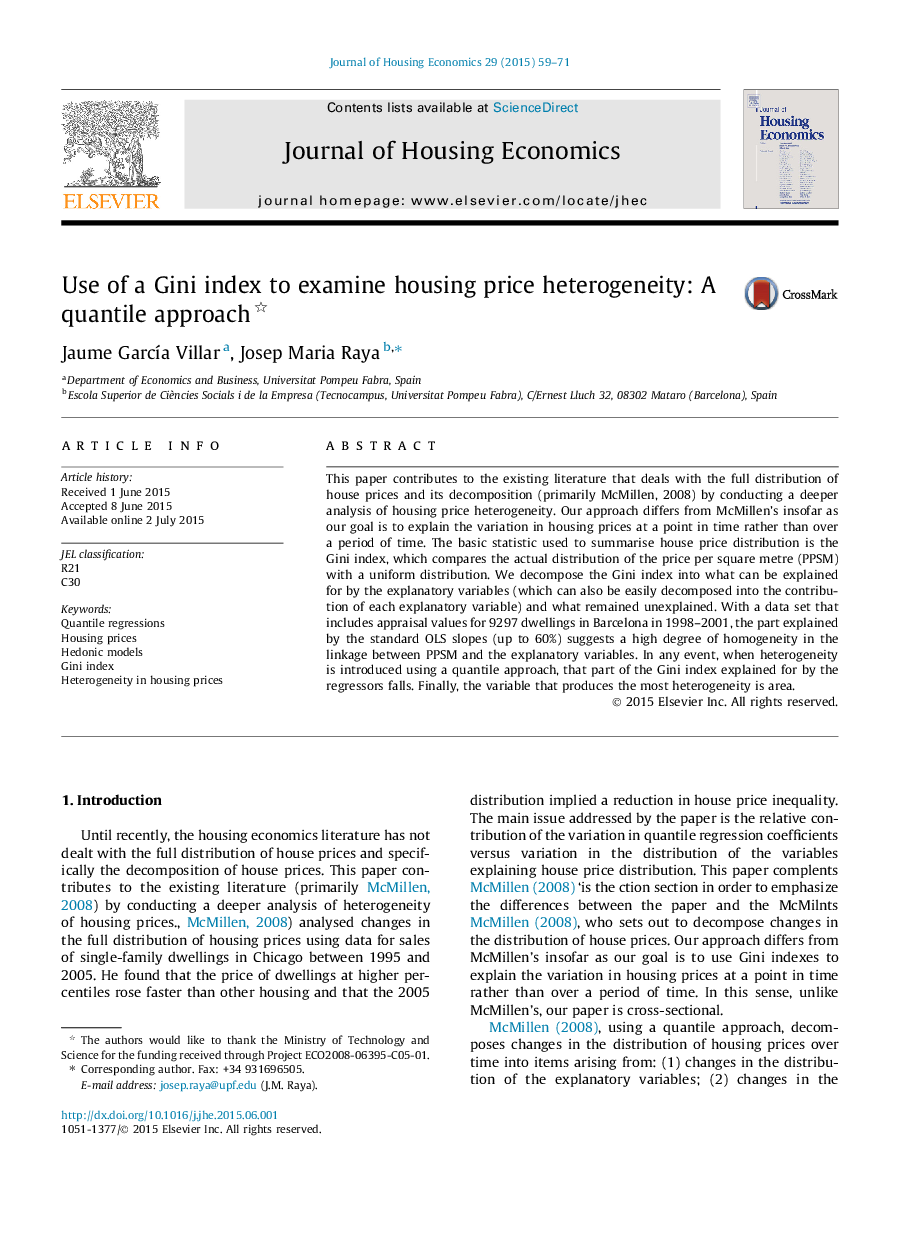| Article ID | Journal | Published Year | Pages | File Type |
|---|---|---|---|---|
| 961816 | Journal of Housing Economics | 2015 | 13 Pages |
Abstract
This paper contributes to the existing literature that deals with the full distribution of house prices and its decomposition (primarily McMillen, 2008) by conducting a deeper analysis of housing price heterogeneity. Our approach differs from McMillen's insofar as our goal is to explain the variation in housing prices at a point in time rather than over a period of time. The basic statistic used to summarise house price distribution is the Gini index, which compares the actual distribution of the price per square metre (PPSM) with a uniform distribution. We decompose the Gini index into what can be explained for by the explanatory variables (which can also be easily decomposed into the contribution of each explanatory variable) and what remained unexplained. With a data set that includes appraisal values for 9297 dwellings in Barcelona in 1998-2001, the part explained by the standard OLS slopes (up to 60%) suggests a high degree of homogeneity in the linkage between PPSM and the explanatory variables. In any event, when heterogeneity is introduced using a quantile approach, that part of the Gini index explained for by the regressors falls. Finally, the variable that produces the most heterogeneity is area.
Related Topics
Social Sciences and Humanities
Economics, Econometrics and Finance
Economics and Econometrics
Authors
Jaume GarcÃa Villar, Josep Maria Raya,
